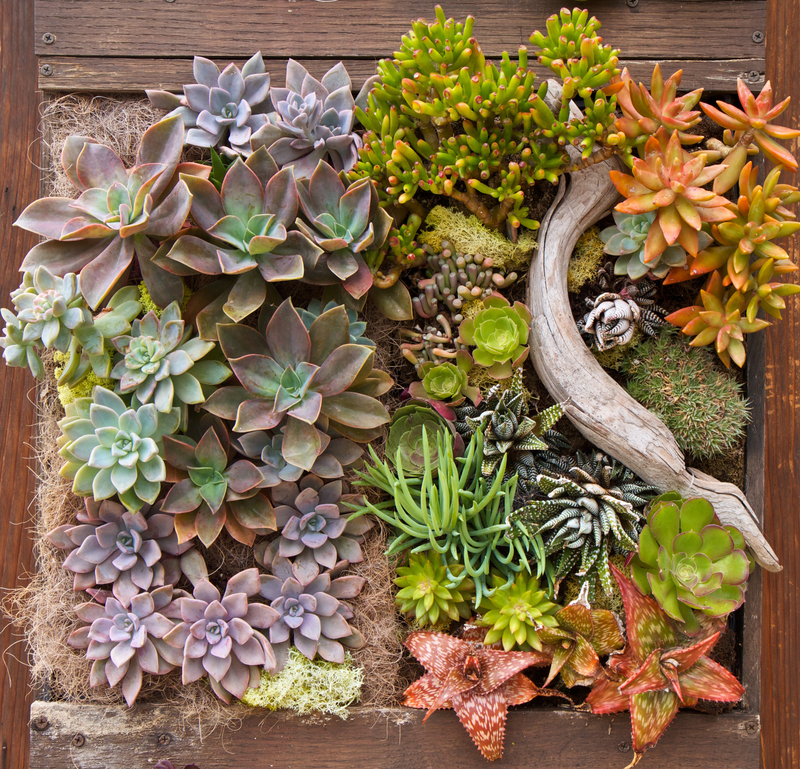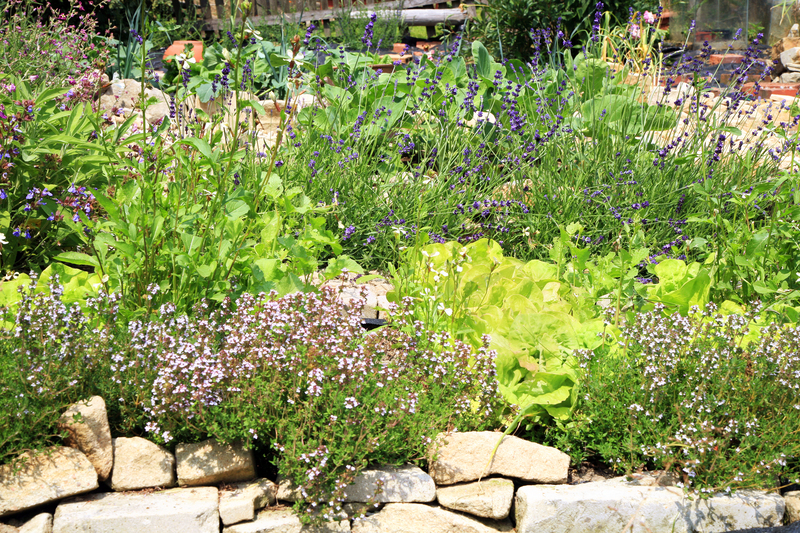Achieving Success with Your Orchid Care Routine
Posted on 22/08/2025
Achieving Success with Your Orchid Care Routine
Orchids have captivated plant lovers for centuries with their exotic beauty, mesmerizing blooms, and remarkable variety. However, many beginners think that success with orchids is reserved for experts only. In reality, by following a well-planned orchid care routine, anyone can nurture these stunning plants into healthy, long-lived specimens. If you're looking to excel in orchid maintenance and understand every aspect of their requirements, this comprehensive guide is tailored just for you!

Understanding Orchid Basics: Species, Growth, and Origins
Before diving into detailed orchid care tips, it's vital to understand some orchid fundamentals:
- Orchid species: There are over 25,000 naturally-occurring species of orchids, plus thousands of hybrids. Some popular types include Phalaenopsis (moth orchid), Dendrobium, Cattleya, and Oncidium.
- Origins: Most orchids are tropical or subtropical, growing on trees as epiphytes (not in soil). Understanding their native environment helps recreate ideal orchid care conditions at home.
- Growing habits: Orchid roots are aerial, needing both air and moisture. Their leaves are thick or leathery, designed to store water.
With this knowledge, you're already starting on the right foot for orchid cultivation success.
Creating the Ideal Environment for Orchids
The key to orchid care routine success is replicating their natural habitat as closely as possible. Let's break down the essential environmental factors:
Light Requirements
- Phalaenopsis prefer bright, indirect sunlight. Direct hot sun can scorch leaves.
- Cattleya, Dendrobium, and Oncidium enjoy slightly more light, but still need protection from intense afternoon sun.
- Choose an east-facing window for gentle morning light or use sheer curtains on south/west windows.
Tip: If your orchid leaves are dark green, they may need more light. Yellowish leaves can mean too much sun.
Temperature and Humidity
- Optimal temperatures are 65-80?F (18-27?C) during the day, with nights 10-15?F cooler, especially to stimulate blooming.
- Humidity should stay between 40-70%.
- Increase humidity by misting, using trays of pebbles and water, or running a humidifier.
Air Circulation
Orchids require gentle, steady airflow to prevent fungal diseases and ensure strong growth. A small fan nearby, set on low, is usually sufficient. Good air movement mimics the natural breezes orchids enjoy in the wild!
The Best Orchid Watering Routine
One of the most common reasons orchids fail is improper watering. Mastering this part of your orchid care routine is crucial for success.
How Often Should You Water Orchids?
- Most orchids do best when watered once a week, but frequency varies by type, environment, and season.
- Orchid roots should never sit in water--let the potting medium become almost dry before watering again.
- Use the skewer test: Stick a wooden skewer into the pot; if it comes out damp, wait. If dry, it's time to water.
Watering Technique
- Water early in the day using room temperature, non-softened water (rainwater is ideal).
- Flush water through the potting medium until it runs out the bottom, ensuring salts don't build up.
- Avoid letting water sit in the crown (center of leaves) to prevent rot.
Remember: When in doubt, orchids prefer being too dry rather than too wet.
Orchid Fertilization: Feeding for Vibrant Blooms
Another critical aspect of orchid plant care is feeding. Orchids don't need rich soil, but occasional fertilization helps them thrive and flower.
Choosing the Right Fertilizer
- Use a balanced orchid fertilizer (20-20-20 or similar).
- If you're focusing on blooming, opt for a "bloom booster" formula higher in phosphorus.
How and When to Fertilize
- Feed "weakly, weekly"--mix fertilizer at a quarter strength and apply during every other watering.
- Rinse the pot with clean water every month to prevent salt buildup.
- Reduce feeding when orchids are not actively growing or flowering.
Mastering Orchid Repotting
Repotting is vital in any long-term orchid care routine. A fresh potting mix provides aeration, prevents root rot, and supports new growth.
When Should You Repot Orchids?
- Every 1-2 years for most types, primarily after flowering.
- If you notice broken-down potting medium, sickly roots, or roots crowding out of the pot, it's time.
Steps to Successfully Repot Your Orchid
- Gently remove the orchid from its pot and shake away old medium.
- Trim any dead or rotten roots with sterilized scissors.
- Choose a pot just large enough to fit the healthy root system--packed too tightly, and roots can rot.
- Use a fresh, airy orchid mix: Bark chips, sphagnum moss, or a specialty blend are best for epiphytic orchids.
- Resettle the orchid, add the new medium, and water lightly afterward.
Orchid Blooming Success: Secrets to Healthy Flowers
While healthy foliage is fantastic, most enthusiasts dream of beautiful, long-lasting orchid blooms. Encourage prolific flowering by following these steps:
- Provide proper light--flowers won't form in too little light.
- Induce cooler nights if blooms aren't forming, especially for Phalaenopsis and Dendrobium.
- Resting phase: Allow certain species a dry period after blooms fade (e.g., Dendrobium).
- Fertilize correctly: Use a "bloom booster" formula before and during flowering.
- Don't move the plant once bud spikes appear, as sensitivity to change may cause buds to drop.
Solving Common Orchid Care Problems
Despite a perfect orchid care routine, issues still crop up. Quick identification and treatment are essential for maintaining orchid health.
Yellowing Leaves
- If occasional, it's routine leaf shedding--no need to worry.
- Consistent yellowing may signal overwatering, insufficient light, or nutrient deficiency.
Mushy, Brown Roots
- Root rot is caused by overwatering or compacted, degraded potting mix.
- Repot immediately, trim dead roots, and review your watering habits.
No Blooms or Bud Drop
- Usually due to low light, sudden temperature changes, or insufficient feeding.
- Check for drafts and environmental consistency.
Pests (Mealybugs, Scale, Aphids)
- Rinse leaves in soapy water or treat with horticultural oils. Remove heavily infested areas.
- Keep new plants quarantined before introducing to your main collection.
Essential Tools and Products for Your Orchid Success
Having the right tools makes achieving orchid care routine success much easier:
- Clear orchid pots (to monitor root health)
- Specialized orchid bark or sphagnum moss mix
- Fertilizer made for orchids
- Spray bottle for misting
- Sharp, sterilized scissors or pruners
- Humidity trays or small humidifier
- Wooden skewers for checking moisture
- Optional: Supplemental grow lights for dim areas
Helpful Orchid Care Routine Calendar
To streamline your approach, keep an orchid care checklist or calendar. Here's a sample monthly breakdown:
- Weekly: Check soil moisture, water, and inspect for pests.
- Biweekly: Apply diluted fertilizer if in the growing/blooming season.
- Monthly: Flush pots with clear water to remove salts.
- Seasonally: Adjust watering, light, and humidity as the climate changes.
- Annually: Repot if needed and remove any dead leaves or roots.

Frequently Asked Questions About Orchid Care Success
How can I tell if I'm overwatering my orchid?
Symptoms include floppy, limp leaves, brown mushy roots, and sour-smelling medium. Switch to a lighter watering schedule immediately.
What's the best potting medium for orchids?
A mix of bark, perlite, and sphagnum moss provides aeration and drainage. Avoid soil-based mixes, which retain too much moisture for most orchids.
Can I grow orchids outside?
In tropical and subtropical climates, many orchids thrive outdoors in dappled shade. In colder areas, bring them indoors before temperatures drop below 55?F (13?C).
Conclusion: Flourishing with Your Consistent Orchid Care Routine
Your journey toward successful orchid care is a rewarding one. Orchids, with their unique roots and spectacular blooms, reward patience and consistent attention. Remember:
- Provide the right balance of light, water, air, and food.
- Understand your orchid's specific needs--each type is unique.
- Monitor for pests and disease.
- Don't be afraid to learn and adjust--successful orchid growing is a process!
With this complete orchid care guide, you're well-equipped to nurture happy, healthy, flowering orchids. Achieving success with your orchid care routine is not only possible but truly enjoyable--a hobby that brightens your home and brings a sense of accomplishment year after year.



